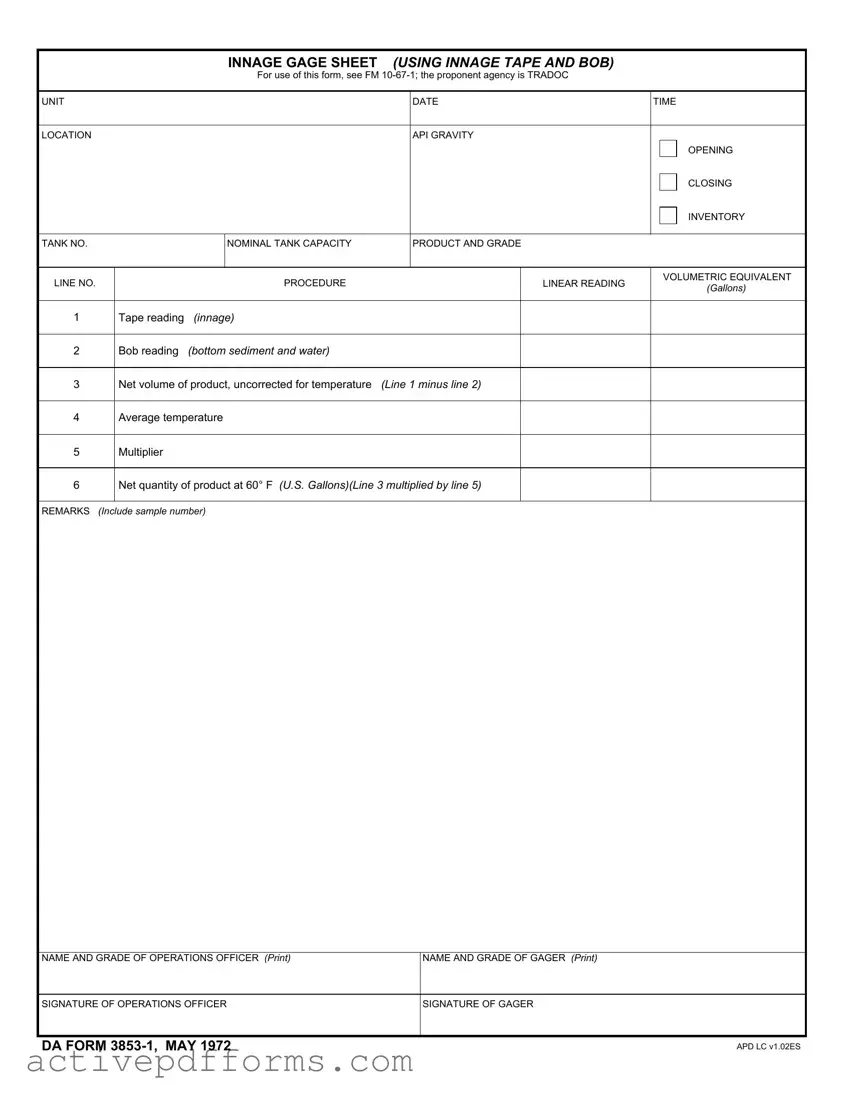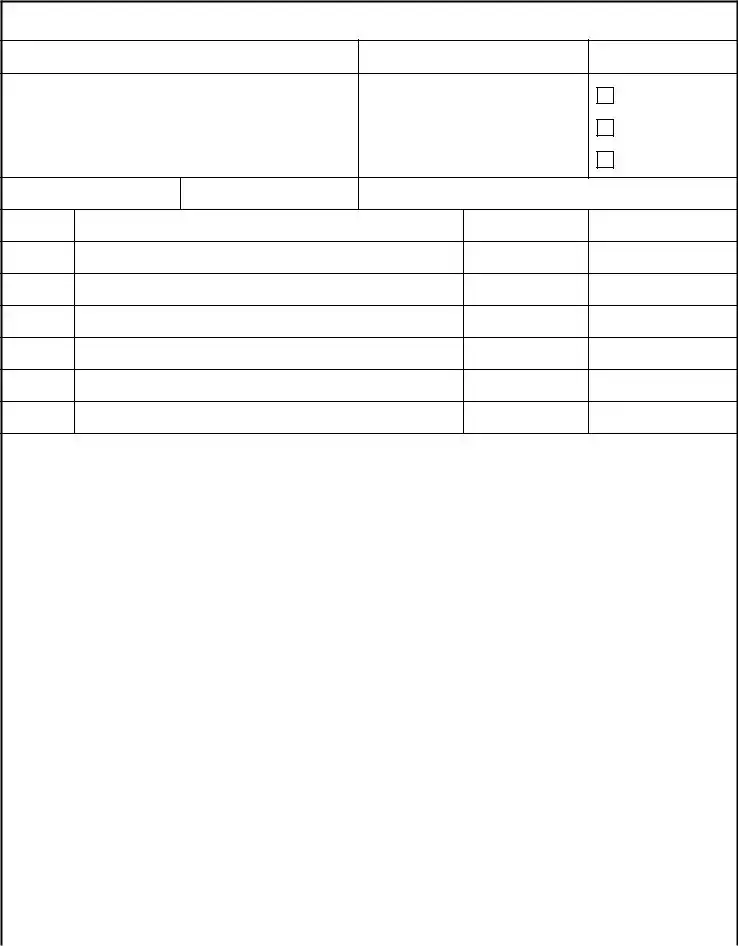Understanding the intricate details of the 3853-1 form is imperative for professionals involved in managing liquid storage capacities, especially those working within military contexts or industries that adhere to strict inventory management protocols. This form, designated for innage gage sheet purposes, utilizes an innage tape and bob technique to accurately measure the volume of a liquid within a tank. Its structure is methodically organized to record critical data points such as the unit location, tank number, product, grade, and nominal tank capacity. Furthermore, it encompasses fields for documenting both the opening and closing inventory alongside the date and time, ensuring a meticulous tracking of liquid assets. The form is meticulously designed to calculate the net quantity of product at a standardized temperature of 60°F, factoring in average temperature and product specifics, through a sequence of steps including tape readings, bob readings for bottom sediment and water, and the application of a multiplier. Endorsed by the Training and Doctrine Command (TRADOC) as per FM 10-67-1, the form also provides space for remarks which can include sample numbers, alongside the printed names and signatures of the operations officer and gager, establishing accountability and traceability. This document, therefore, serves a critical function in the precise management and accounting of liquid resources, signifying its importance in operational logistics and inventory control.

